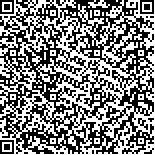| 本文已被:浏览 1799次 下载 1418次 |

码上扫一扫! |
|
|
| DNA条形码技术鉴定青岛市售三文鱼水产品 |
|
赵新宁1,2, 牟铭1,2, 李昂2,3, 柳淑芳2,3, 庄志猛2,3
|
|
1.上海海洋大学水产与生命学院 上海 201306;2.中国水产科学研究院黄海水产研究所 农业农村部海洋渔业可持续发展重点实验室 山东 青岛 266071;3.青岛海洋科学与技术试点国家实验室海洋渔业科学与食物产出过程功能实验室 山东 青岛 266200
|
|
| 摘要: |
| 仅凭感官甄别市售三文鱼(鲑鳟鱼类的统称)是大西洋鲑(Salmo salar)或虹鳟(Oncorhynchus mykiss)难度很大,而广泛应用于物种分类学研究的DNA条形码为物种快速准确鉴定提供了强有力的技术支撑。本研究采用DNA条形码技术,对山东省青岛市6个城区大型商超和农贸市场的三文鱼商品标识与实际物种信息进行了调查。在采集的74份三文鱼样品中,成分为大西洋鲑的样品有61份,占比为82.43%;成分为虹鳟的样品有11份,占比为14.86%;另外,青岛市售三文鱼商品中还含有一定比例的大麻哈鱼(Oncorhynchus keta)和银大麻哈鱼(Oncorhynchus kisutch),各占比为1.35%。调查数据显示,青岛市场流通的三文鱼商品以大西洋鲑为主,但核对商品标识与实际物种信息发现,14.86%的三文鱼外包装标识商品名称与检测结果不一致,且有多于40%的三文鱼商品未标注产地信息。可见,三文鱼水产品仍存在一定的掺假风险和食品安全风险,这一国际公认的高端水产品的市场监管还有待于加强,建议相关部门应尽快制定产品标准和检测标准,确保三文鱼水产品质量安全可溯源。 |
| 关键词: 三文鱼 DNA条形码 大西洋鲑 虹鳟 |
| DOI:10.19663/j.issn2095-9869.20200303003 |
| 分类号: |
| 基金项目: |
|
| Identification of salmon aquatic products sold in Qingdao using DNA barcoding technology |
|
ZHAO Xinning1,2, MU Ming1,2, LI Ang2,3, LIU Shufang2,3, ZHUANG Zhimeng2,3
|
|
1.College of Fisheries and Life Science, Shanghai Ocean University, Shanghai 201306, China;2.Yellow Sea Fisheries Research Institute, Chinese Academy of Fishery Sciences, Key Laboratory of Sustainable Development of Marine Fisheries, Ministry of Agriculture and Rural Affairs, Qingdao, Shandong 266071, China;3.Laboratory for Marine Fisheries Science and Food Production Processes, Pilot National Laboratory for Marine Science and Technology (Qingdao), Qingdao, Shandong 266200, China
|
| Abstract: |
| “Salmon” is the trade name of salmon and trout, these are internationally recognized high-grade aquatic products. In recent years, the large-scale supply of rainbow trout has had a great impact on the world salmon trade, triggering a war of “real” and “fake” salmon. The public impression is that the high quality and high market price of the famous Atlantic salmon (Salmo salar) from Atlantic Ocean is not comparable to the cultured freshwater rainbow trout (Oncorhynchus mykiss). Thus, it is important to have knowledge about the species of salmon available in the aquatic market and whether the species information indicated on the label is true. It is very difficult for ordinary consumers to identify the species of salmon in the market. DNA barcoding has been widely used in the study of species taxonomy. It is a powerful technology for rapid and accurate identification of species. In this study, DNA barcoding was used to investigate the consistency between label information and the actual species of salmon in products across six large supermarkets and aquatic markets in Qingdao. Of the 74 salmon samples collected, 61 were S. salar, accounting for 82.43%; 11 were O. mykiss, accounting for 14.86%; and O. keta and O. kisutch accounted for 1.35%. Although the survey data shows that Atlantic salmon is the main salmon product in Qingdao, we identified that 14.86% of labels on salmon products were inconsistent with the test results, and more than 40% of the salmon products did not provide origin information. Thus, there are still some adulteration and food safety risks in aquatic salmon products. Market supervision of this internationally recognized high-end aquatic product needs to be strengthened. The relevant departments should urgently formulate product standards and testing standards to ensure the safety and traceability of salmon quality before inferior species affect the high public impression of salmon products. |
| Key words: Salmon DNA barcoding Salmo salar Oncorhynchus mykiss |